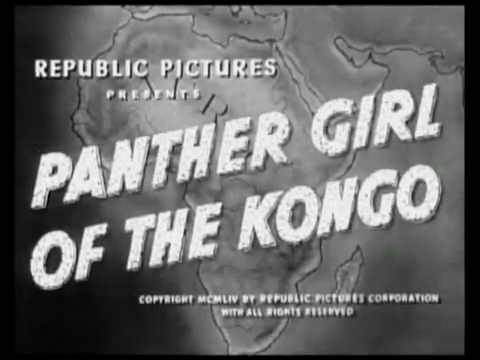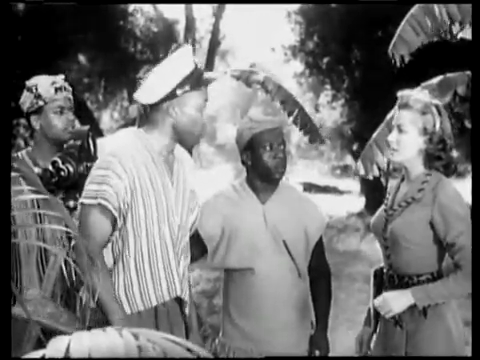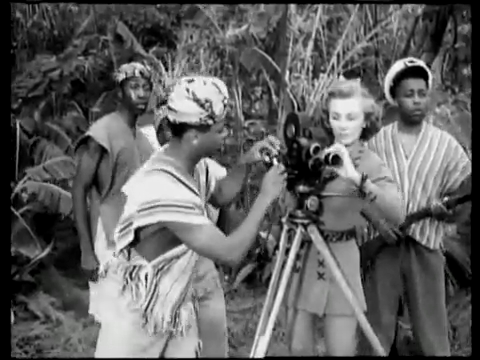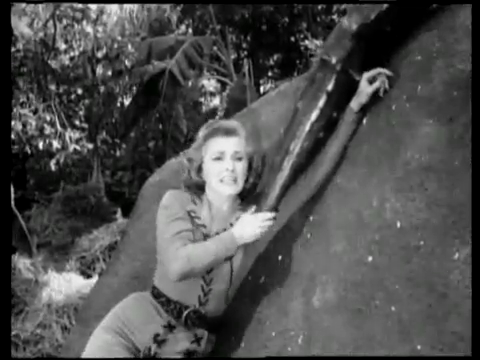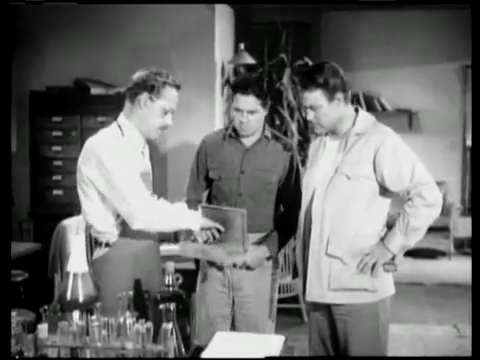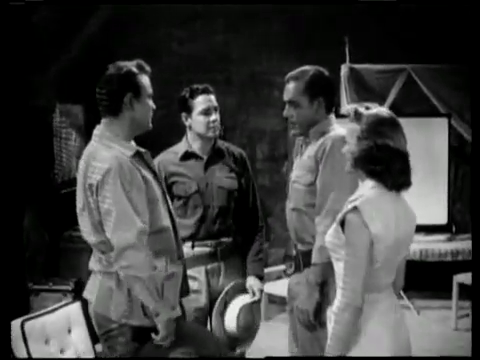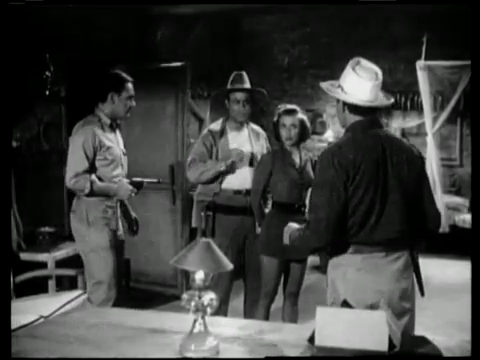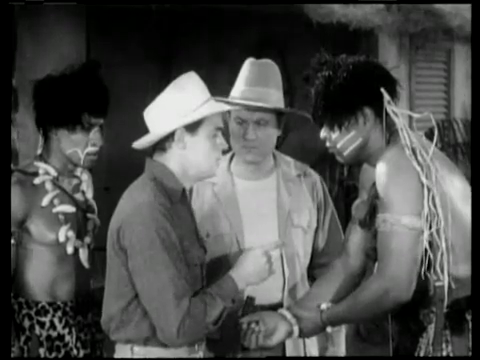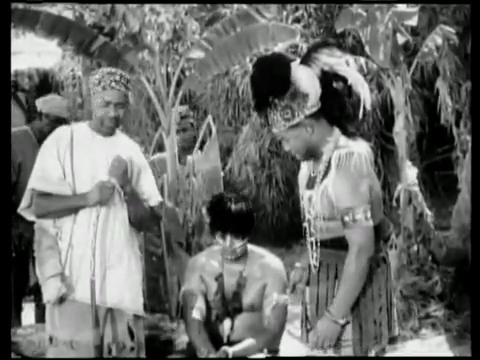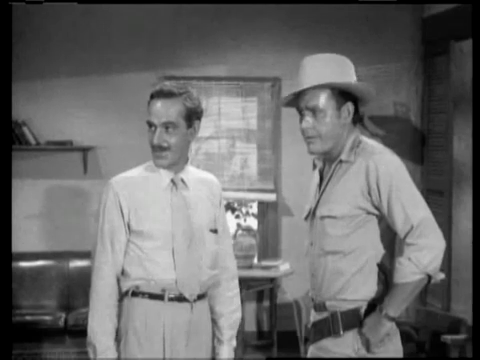-
#467 – Panther Girl of the Kongo (1955)
Panther Girl of the Kongo (1955)
Film review #467
Director: Franklin Adreon
SYNOPSIS: Jean Evans, a member of a wildlife foundation, is in Africa taking photos of local wildlife when she encounters a giant crayfish that nearly kills her. She teams up with Larry Sanders, a big game hunter, to stop the creature and discover it’s origins.
THOUGHTS/ANALYSIS: Panther Girl of the Kongo is a 1955 serial produced by Republic Pictures and comprised of twelve chapters. The serial centres around Jean Evans, who works for a wildlife foundation taking photographs of wildlife. She is known as “Panther girl” because…I don’t know, she rides an elephant sometimes and dives off cliffs; the only panther I recall seeing is at the end screen. Anyway, she encounters a giant crayfish that attacks her, but is saved by Larry Sanders, a big game hunter in the area. The two team up to try to stop the monster and unravel the mystery of it’s origins, while trying to stop two outlaws in the area. This is the cornerstone of the plot, alongside Dr. Morgan, a scientist also in the area, has created the giant monster to scare off people from a mine full of diamonds while he harvests them all. Obviously, this type of plot has been done to death, and is perhaps more famously associated with a vast chunk of episodes of Scooby-Doo, meaning it’s hardly an interesting watch nowadays when it’s been done and done again. There’s also not much of a plot besides this, and the heroes trying to stop the giant crayfish monster thing. Trouble is, it doesn’t show up for a good chunk of the serial, and so Jean and Larry are left to do the typical back-and-forth with Morgan’s henchman, as they make plans, set traps, and start fistfights with each other. As it is, the plot rarely has any direction, and the stakes are also pretty low, since again it’s not all for world domination or anything, just a man wanting to mine some diamonds in the middle of nowhere.
Quite rarely for a serial, the main character is a woman. Jean Evans is the “panther girl” due to her prowess in the jungle (even though there’s no panthers that we see), and she actually does something other than being kidnapped. The only other serial that does this to this degree is perhaps Jungle Girl (more on that later). However, when the script requires it, she does revert to the typical screaming damsel in distress, and the male lead swoops in to save her. He also does most of the shooting and punching, but still Jean’s character is central to the plot. Larry is just a typical male lead with no real character. The villains also are just typical henchman and a “mad” scientist who isn’t all that mad, just wants to get rich. The setting of non descript “Africa” and its stereotypical depiction of “tribes” is problematic and presenting the entire continent in this way is a depiction that prevailed for decades thanks to films such as these.
The serial is quite similar to the Jungle Girl serial released in 1941, particularly with regards to a jungle-savvy female lead. This is also not coincidental, as this serial uses a lot of the footage from the serial, particularly the on-location stuff and animals. In 1955, the serial format was really on it’s last legs, and it’s no surprise that the studios wanted to do as little new stuff as possible (although cost-cutting and re-using footage has been a staple of the serial format for years at this point). Since Jungle Girl was released fourteen years before, and theatre-goers probably wouldn’t have seen it or forgotten about it due to the lack of home media releases, and the only way to see older serials would be to watch re-releases at theatres, which I believe were somewhat rare, and even then they really don’t benefit from repeated viewings. The re-used footage is pretty heavy in the finale, when the action sequences are almost entirely made up from this footage, and the transition between the different footage is very awkward and disjointed. For example, you can clearly see “Jean’s” outfit change from scenes as she instantly switches from a miniskirt to swinging from the trees in leggings. The “giant” crayfish is obviously not a giant one, just a regular one filmed amongst miniatures. It’s not particularly convincing, especially when the “giant claw” attacks people with the rest of its body just offscreen. Overall, Panther Girl of the Kongo is a fairly weak serial, in which it’s most interesting aspects are just bits of re-used footage. The plot is non-directional and has fairly low stakes, alongside often feeling it’s just padding for the more interesting re-used footage. The emphasis on the female lead is a more unique aspect, but she is reverted to the typical “damsel in distress” when the plot wants to do a more typical set-up of the female being the victim. The serial is very low on imagination and spectacle, and is emblematic of the serial format in it’s twilight years as the format became unviable with the introduction of televisions in homes.
